

World Heritage Sites
designated by
UNESCO
the World Heritage Committee has inscribed 890 properties on the World Heritage List
The following are some I have visited:
| Historic Sanctuary of Machu Picchu, Peru |
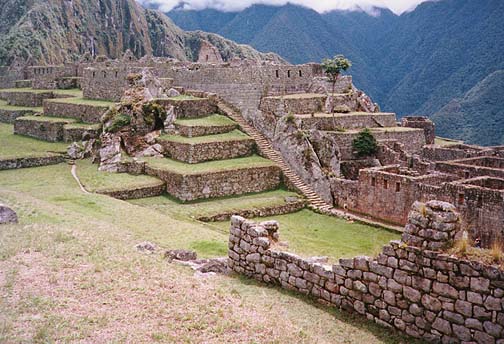
Machu Picchu
At 2,430 metres above sea level, on a mountain site of extraordinary beauty, in the middle of a tropical mountain forest, Machu Picchu was probably the most amazing urban creation of the Inca Empire at its height, with its giant walls, terraces and ramps, which appear as though they have been cut naturally in the continuous rock escarpments. The natural setting on the eastern slope of the Andes encompasses the upper Amazon basin with its rich diversity of species.
| Historic Centre of Lima, Peru |
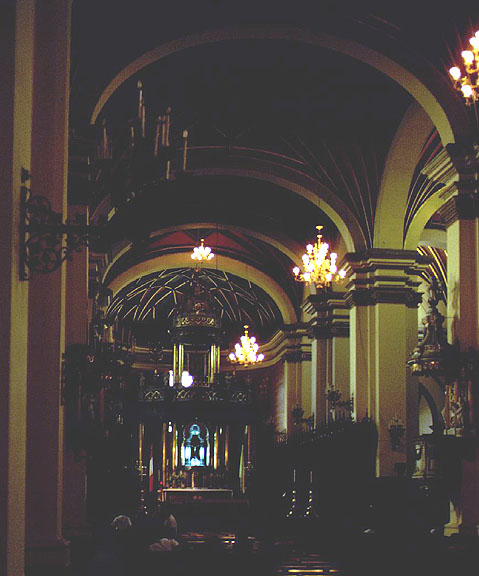
interior of cathedral, Lima
Although severely damaged by earthquakes (in 1940, 1966, 1970 and 1974), this "City of Kings" was, until the middle of the 18th century, the capital and most important city of the Spanish dominions in South America. Many of its buildings, such as the San Francisco Convent (the biggest in this part of the world) are the result of joint creations between local craftsmen and masters from the Old Continent.
| The Lines and Geoglyphs of Nasca and Pampas de Jumana, Peru |
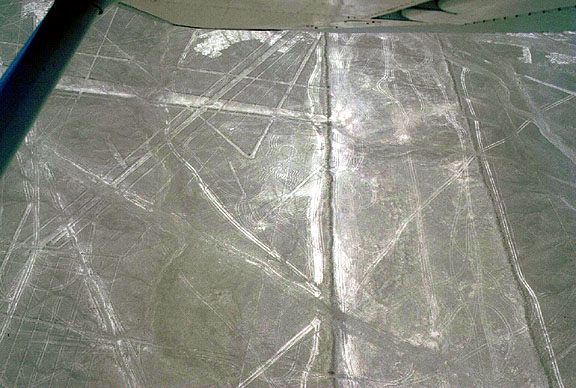
the famous
NAZCA lines
(as seen from a small aircraft)
Located in the arid Peruvian coastal plain, some 400 km south of Lima, the geoglyphs of Nasca and the Pampas of Jumana cover about 450 square km. These lines, which were drawn between 500 B.C. and 500 A.D., are among the most impenetrable enigmas of archaeology by virtue of their quantity, nature and size, as well as their continuity. Some of the geoglyphs depict living creatures, plants or imaginary figures, as well as geometric figures several kilometres long. They are believed to have had ritual functions connected with astronomy.
| Cracow's Historic Centre, Poland |
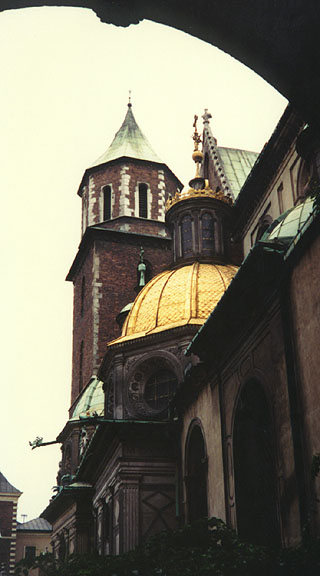
the cathedral
Located at the foot of the Wawel, 250 km south-east of Warsaw, Cracow, the former capital of Poland, has a rich historic centre made up of the medieval site of Kazimierz in the southern part of the town with remnants of the 14th-century fortifications, the 13th-century site of Cracow with the largest market square in Europe, the City Hall, the Jagellonian University, the Royal Castle and the Cathedral of San Waclaw where the kings of Poland are buried.
| Auschwitz Concentration Camp, Poland |
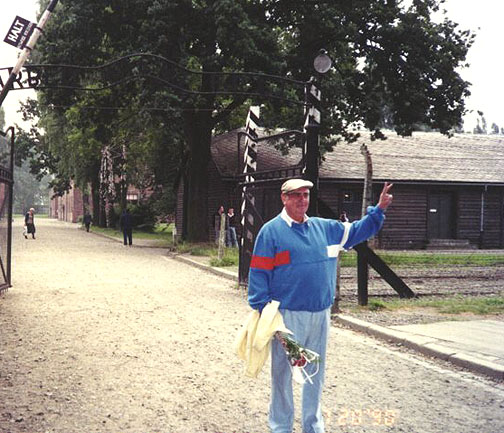
Entrance with "Archie", a survivor of Auschwitz.
The fortified walls, the barbed wire, the platforms, the barracks, the gallows, the gas chambers and the cremation ovens all bear witness to the conditions within which the Hitlerian genocide took place in the former concentration and extermination camp of Auschwitz-Birkenau, the most extensive of the Third Reich. Four million persons, among them a great number of Jews, were systematically starved, tortured and assassinated in this camp, symbol of the cruelty of man to his fellow- men in the 20th century.
| Historic Centre of Warsaw, Poland |
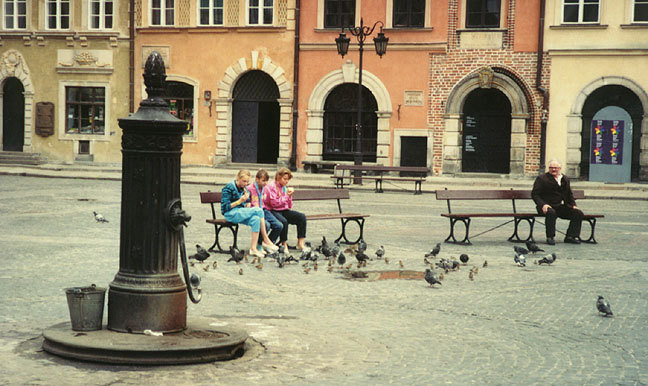
Old Town, Warsaw
In August 1944, during World War II, more than 85 per cent of Warsaw's 18th-century historic centre was destroyed by Nazi occupation troops. After the war, a five-year reconstruction campaign by its citizens resulted in today's meticulous reproduction of the churches, palaces and the market-place. It is an exceptional example of a total reconstruction of a span of history from the 13th to the 20th century.
| The Medieval Town of Torun, Poland |
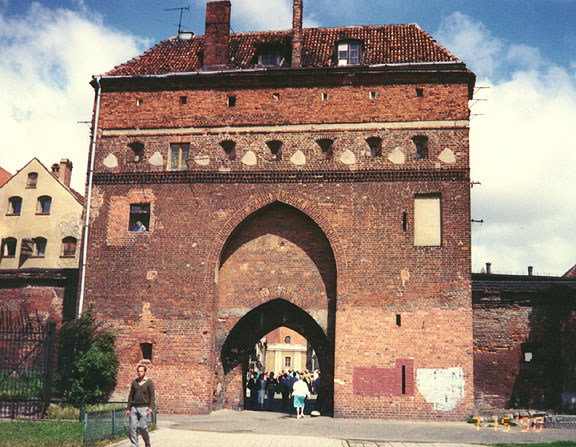
city gate
Torun owes its origins to the Teutonic Order, which built a castle there in the mid 13th century as a base for the conquest and evangelization of Prussia. It quickly developed a commercial role as part of the Hanseatic League, and many of the imposing public and private buildings from the 14th and 15th centuries that survive in its Old and New Towns are striking testimony to its importance.
|
The Castle of the
Teutonic Order in Malbork, Poland |
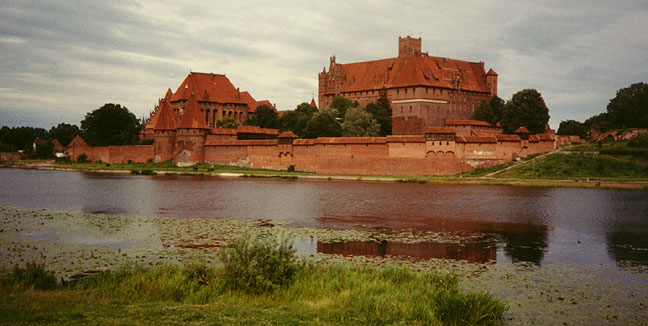
Marienburg, German Teutonic Fortress now located in Poland.
When the seat of the Grand Master of the Teutonic Order moved from Venice to what was then known as Marienburg, the earlier castle was greatly enlarged and embellished. It became the supreme example of the medieval brick castle. It fell into decay later, but in the 19th and early 20th century was meticulously restored; it was here that many of the conservation techniques now accepted as standard were evolved. Following severe damage in World War II it was once again restored, using the detailed documentation prepared by the earlier conservators.
| Monastery of the Hieronymites and Tower of Belem in Lisbon, Portugal |
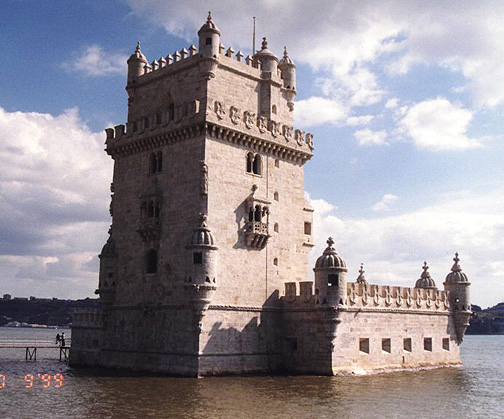
Tower of Belém
Standing at the entrance to Lisbon's harbour, the Monastery of the Hieronymites - construction of which began in 1502 - exemplifies Portuguese art at its best, while the nearby Tower of Belem, built to commemorate Vasco de Gama's expedition, is a reminder of the great maritime discoveries that laid the foundations of the modern world.
| Cultural Landscape of Sintra, Portugal |
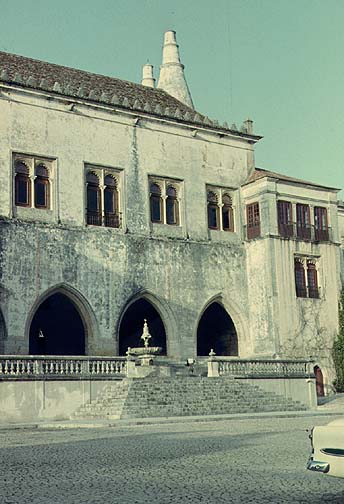
Sintra
In the 19th century Sintra became the first centre of European Romantic architecture. Ferdinand II turned a ruined monastery into a castle where this new sensitivity was displayed in the use of Gothic, Egyptian, Moorish and Renaissance elements and in the creation of a park blending local and exotic species of trees. Other prestigious homes built along the same lines in the surrounding Serra created a unique combination of parks and gardens which influenced the development of landscapes in Europe.
| The Historic Centre of Oporto, Portugal |
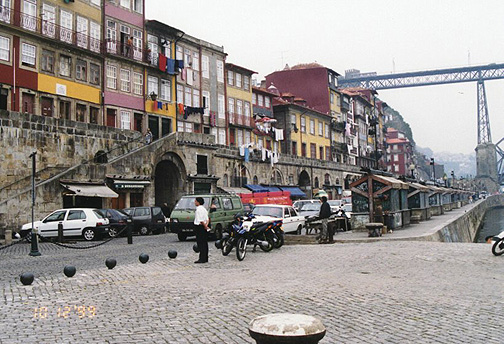
Old town (under the bridge)
The city of Oporto, built along the hillsides which overlook the mouth of the Douro river, forms an exceptional urban landscape with a thousand-year history. It continuous growth, linked to the sea (the Romans gave it the name Portus, or port), can be seen in its many and varied monuments -- from the Cathedral with its Roman choir, via the neo-Classical Stock Exchange to the typically Portuguese Manueline-style church of Santa Clara.
| The Laurisilva of Madeira, Portugal |
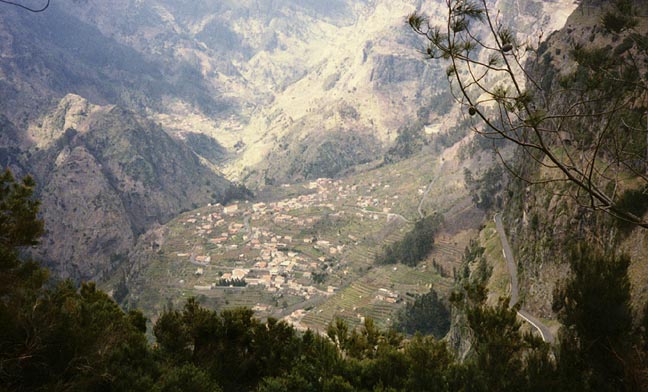
views of the mountainous area
The Laurisilva of Madeira is an outstanding relict of a previously widespread laurel forest type. It is the largest area of laurel forest surviving and is believed to be 90% primary forest, containing a unique suite of plants and animals including many endemic species such as the Madeiran long-toed pigeon.
| Alto Douro Wine Region, Portugal |
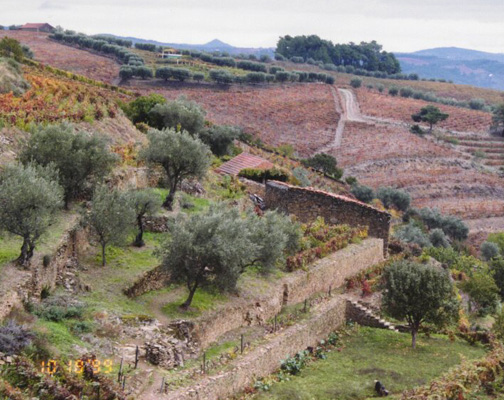
vineyards
Wine has been produced by traditional landholders in the Alto Douro region for some 2,000 years. Since the 18th century, its main product, port wine, has been world famous for its quality. This long tradition of viticulture has produced a cultural landscape of outstanding beauty that reflects its technological, social and economic evolution.
| Haeinsa Temple Janggyeong Panjeon, the Depositories for the Tripitaka Koreana Woodblocks, Korea |
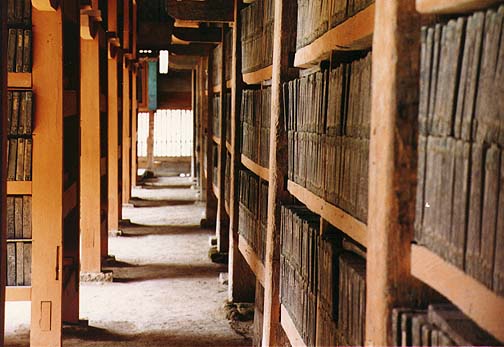
Tripitaka
Koreana
(80,000
wood blocks of Buddhist Text)
The Temple of Haeinsa, on Mount Kaya, is home to the Tripitaka Koreana, the most complete collection of Buddhist texts, engraved on 80,000 woodblocks between 1237 and 1249. The buildings of Janggyeong Panjeon, which date from the 15th century, were constructed to house the woodblocks, which are also revered as an exceptional work of art. As the oldest depository of the Tripitaka, they reveal an astonishing mastery of the devising and implementation of conservation techniques.
| Historic Centre of Saint Petersburg and Related Groups of Monuments, Russia |

Peter the Great presiding over a dreary day in St. Petersburg
The "Venice of the North" with its numerous canals and more than 400 bridges is foremost the result of a vast urban project begun in 1703 under Peter the Great. Known later as Leningrad (in the former USSR), it is closely associated with the October Revolution. Its architectural heritage reconciles the opposite styles of baroque and pure neo- classicism, as seen in the Admiralty, the Winter Palace, the Marble Palace and the Hermitage.
My Life List of World Heritage sites I have visited
![]()
Return to Favorite Experiences page
![]()